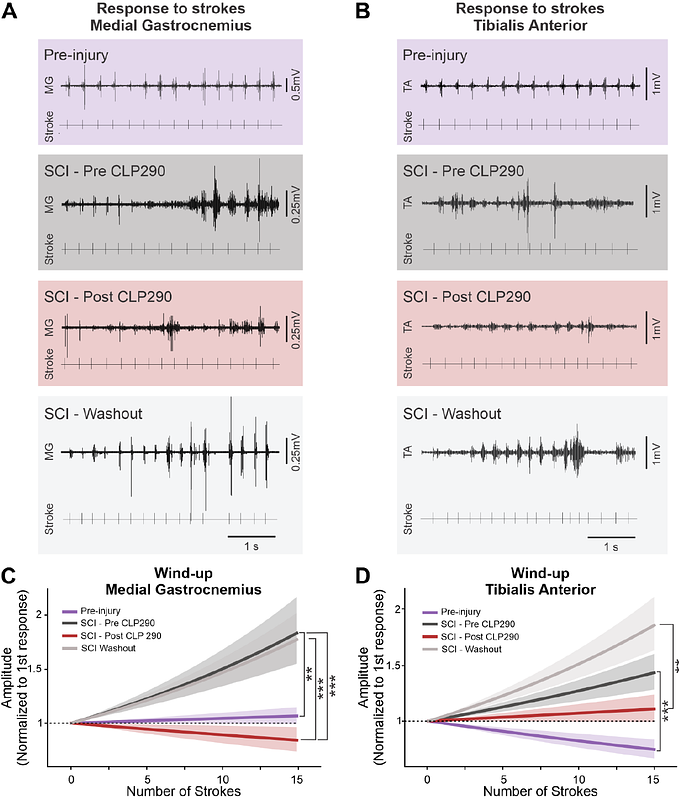KCC2 Enhancers Normalize Reflex Responses and Improve Locomotor Function after Chronic Spinal Cord Injury

KCC2 Enhancers Normalize Reflex Responses and Improve Locomotor Function after Chronic Spinal Cord Injury
Bilchak, J. N.; Caron, G.; Danner, S. M.; Cote, M.-P.
AbstractWithin a year after a spinal cord injury (SCI), 70% of individuals develop spasticity. While normal movement relies on the ability to adjust reflexes appropriately, and on reciprocal inhibition of antagonistic muscles, spastic individuals display hyperactive spinal reflexes and involuntary muscle co-contractions. Current anti-spastic medications can suppress uncontrolled movements, but by acting on GABAergic signalling, these medications lead to severe side-effects and weakened muscle force, making them incompatible with activity-based therapies. We have previously shown that pharmacologically enhancing activity of KCC2, a chloride cotransporter, reduces signs of spasticity in anesthetized chronic SCI rats. Here, we examine the effect of enhancing KCC2 in awake animals, using a battery of tests to assess multiple reflex pathways required for normal movement as well as locomotor function. Sprague-Dawley rats were implanted with chronic EMG electrodes bilaterally in ankle flexor and ankle extensor muscles and received a complete spinal transection at T12. Four weeks following SCI, the stretch reflex, the non-nociceptive cutaneous reflex pathway, the flexor withdrawal reflex, and the crossed-extensor reflex pathway as well as locomotor function were evaluated before and after receiving the KCC2 enhancer, CLP290. Our results show that enhancing KCC2 activity normalizes reflex responses in multiple pathways and reduces muscle co-contraction without weakening motor output, thereby improving stepping ability. This work reveals the substantial potential for KCC2 enhancers as a novel antispastic treatment.